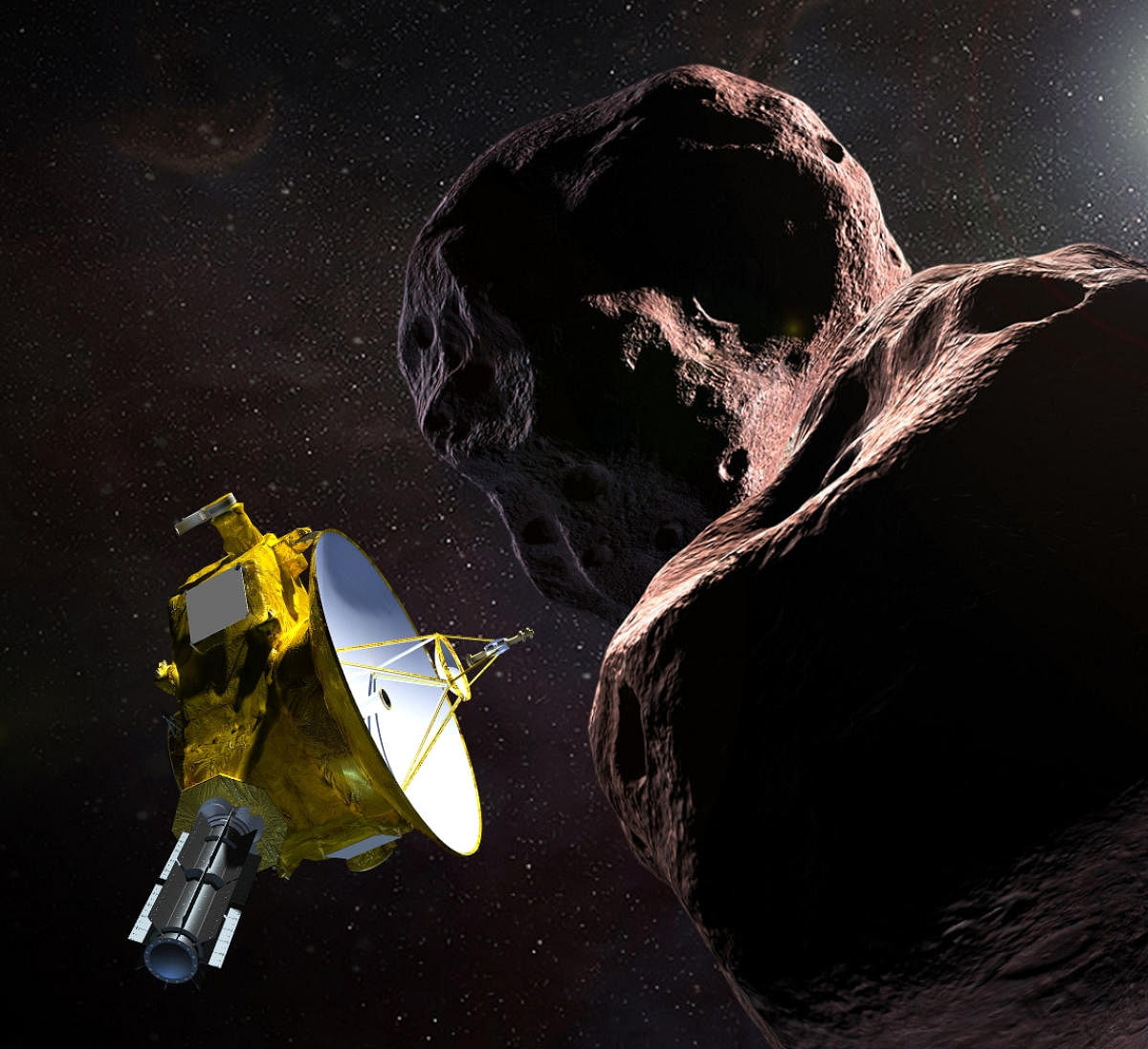
The first detailed images beamed back by NASA's New Horizons after the flyby of Ultima Thule -- the most distant and possibly oldest space object ever explored -- show that the icy 'worldlet' resembles a reddish snowman.
Its appearance, unlike anything we have seen before, illuminates the processes that built the planets four and a half billion years ago, the US space agency said in a statement.
"The flyby is a historic achievement," said New Horizons Principal Investigator Alan Stern of the Southwest Research Institute in the US.
"Never before has any spacecraft team tracked down such a small body at such high speed so far away in the abyss of space. New Horizons has set a new bar for state-of-the-art spacecraft navigation," Stern said.
Based on fuzzy images obtained earlier, the scientists had said that Ultima Thule resembled a bowling pin.
However, the new images -- taken from as close as 27,000 kilometres on approach -- revealed Ultima Thule as a "contact binary," consisting of two connected spheres, resembling a snowman.
End to end, the world measures 31 kilometers in length. The team has dubbed the larger sphere "Ultima" and the smaller sphere "Thule".
The two spheres likely joined as early as 99 per cent of the way back to the formation of the solar system, colliding no faster than two cars in a fender-bender.
"New Horizons is like a time machine, taking us back to the birth of the solar system. We are seeing a physical representation of the beginning of planetary formation, frozen in time," said Jeff Moore, New Horizons Geology and Geophysics team lead.
"Studying Ultima Thule is helping us understand how planets form -- both those in our own solar system and those orbiting other stars in our galaxy," said Moore.
Data from the New Year's Day flyby will continue to arrive over the next weeks and months, with much higher resolution images yet to come.
"In the coming months, New Horizons will transmit dozens of data sets to Earth, and we'll write new chapters in the story of Ultima Thule -- and the solar system," said Helene Winters, New Horizons Project Manager.